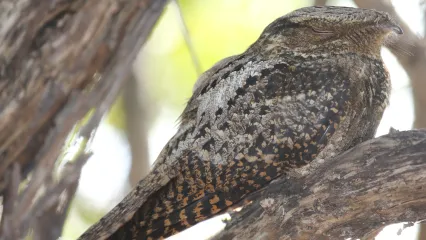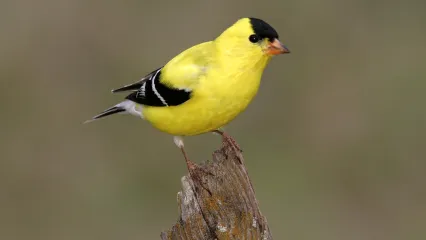
Description
Chuck-will’s-widows are a member of the nightjar family, a group of birds that nest on the ground and hunt insects while in flight. (This family is often referred to as “goatsuckers” because of a myth that these birds feed on goat mil.) Other members of the nightjar family include the whip-poor-will, common nighthawk and common poorwill. Of the four species found in Oklahoma, chuck-will’s-widows are the largest. Like other nightjars, chuck-will’s-widows are well camouflaged, with brown, black and buff patterned feathers. They have a large, flat head and long tail and wings. Seldom seen, these birds can be identified by their namesake call alone. Though similar to the call of the whip-poor-will, you can distinguish the chuck-will’s-widow by the slower, lower pitched song.
Size
Approximately 12 inches long.
Habitat
While in the United States, this bird can be found in dense woodlands along creeks and streams. Two to four eggs are laid on the ground in a shallow depression in leaf litter or pine needles. Nests are in plain sight but are protected by the cryptic coloration of the incubating adult. Incubation lasts 20 days and chicks fledge 17 days later. Adults continue to feed the fledglings for two weeks.
Life Cycle
To guide flying insects into their large, open mouths when foraging, these birds have modified feathers, or bristles, that resemble whiskers around their beak. But chuck-will’s-widows have a very diverse diet. In addition to eating moths and beetles, this bird will occasionally eat small birds – primarily migrating warblers – and even bats! When molting tail feathers in late summer, chuck-will’s-widows have even been seen hunting frogs on the ground! After wintering in South America, chuck-will’s-widows make the long journey to the southeastern United States to take advantage of our abundant summer insect populations. Oklahoma records show this bird is a dependable migrant; over 25 years of data from Washington County report the first chuck-will’s widow song between April 20 and April 24 and the last song of the season between July 16 and July 20.

